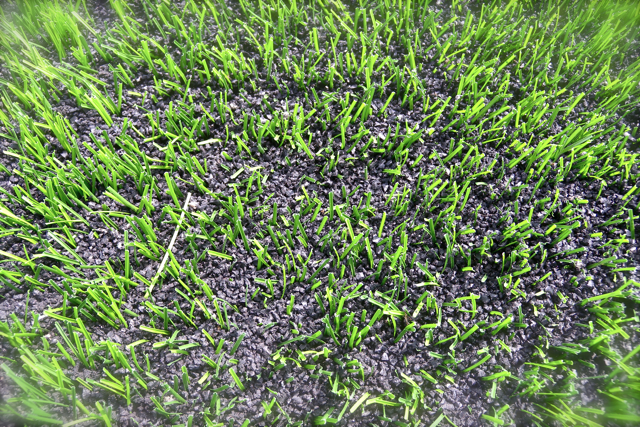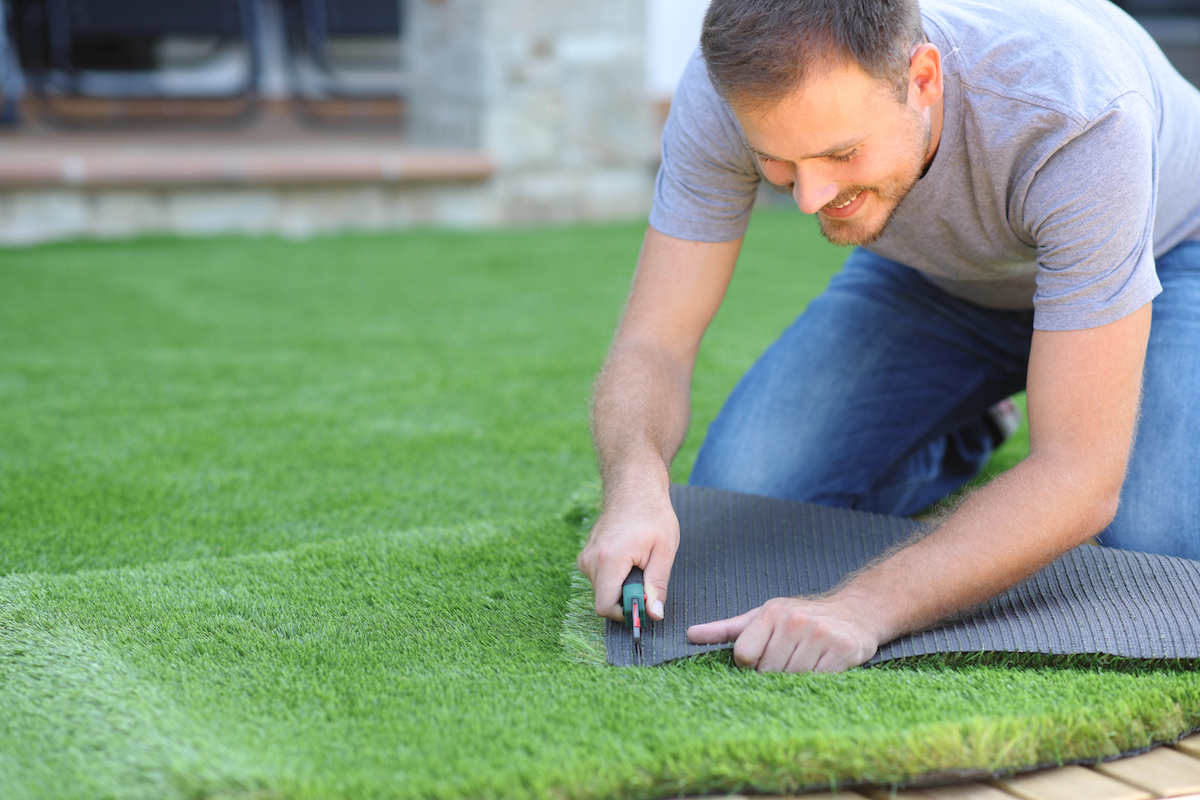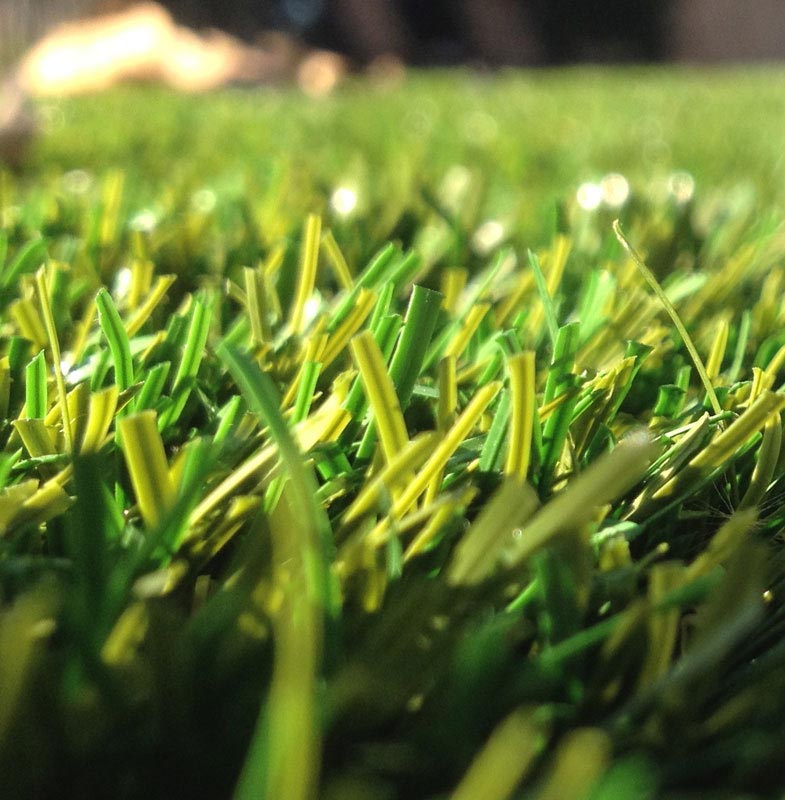See Why Homeowners Prefer Synthetic Grass for Lasting Landscape Design Practices
As home owners increasingly prioritize sustainability in landscape design, artificial lawn has emerged as a compelling choice to standard grass. What continues to be to be explored is the complete range of benefits that man-made turf can provide to home owners and the atmosphere alike.
Water Preservation Benefits
One of the most significant advantages of synthetic lawn is its role in water preservation. Standard grass lawns require considerable quantities of water to preserve their lavish look, frequently bring about overuse of local water resources, particularly in deserts. In contrast, synthetic grass eliminates this need completely, as it does not call for irrigation. This not only preserves water but likewise decreases the stress on local water systems, especially throughout drought problems.
Moreover, the installment of synthetic grass can contribute to a more lasting landscape. Property owners can considerably reduce their water expenses, enabling reallocation of sources to various other environmental initiatives or house uses. Additionally, synthetic grass is designed to hold up against various weather conditions without the need for supplementary watering, making it a perfect selection for areas encountering water shortage.
The ecological advantages expand beyond instant water savings. By lowering water usage, synthetic grass aids to reduce the influences of environment modification, preserving vital ecosystems that are endangered by extreme water extraction. As sustainable landscape design practices obtain traction, artificial lawn emerges as a liable option for house owners looking for to produce eco-friendly outdoor spaces.
Minimized Upkeep Initiatives
Synthetic turf dramatically lowers upkeep efforts contrasted to typical yard yards. With fabricated turf, homeowners can remove the lengthy tasks linked with all-natural landscape design, such as mowing, feeding, and weeding. This not only saves beneficial time yet additionally lowers physical labor, making grass treatment obtainable for individuals of all ages.
Typical yards require frequent cutting to preserve a cosmetically pleasing height, whereas synthetic grass continues to be regularly lavish without the demand for reducing. In addition, house owners no much longer need to use chemicals or plant foods, which are usually called for to maintain natural grass healthy.
Moreover, synthetic grass is resilient and durable, calling for very little upkeep past periodic cleaning and rinsing to eliminate debris. This simplicity of upkeep enables property owners to appreciate their outdoor spaces without the consistent concern of upkeep, giving more time for recreation and family members tasks. Eventually, the reduced upkeep initiatives related to man-made lawn make it an enticing alternative for those seeking a low-maintenance, aesthetically appealing landscape.

Environmental Effect Reduction
There is an expanding acknowledgment of the ecological advantages connected with artificial lawn, specifically in regards to water preservation and reduced chemical usage. Standard grass need considerable quantities of water, especially in drought-prone areas, bring about increased pressure on neighborhood water sources. On the other hand, synthetic grass eliminates the demand for watering, drastically lowering water usage and promoting sustainability.
Furthermore, conventional grass upkeep often includes the application of pesticides, herbicides, and fertilizers, which can add to dirt and water pollution. Fabricated grass reduces this environmental threat by requiring very little maintenance and practically removing the demand for dangerous chemicals. This not only boosts dirt wellness however likewise secures neighborhood ecosystems from poisonous drainage.
In addition, the manufacturing of natural lawn lawns generally entails making use of nonrenewable fuel sources for mowing and landscape design equipment, further adding to greenhouse gas exhausts. By picking synthetic lawn, property owners can considerably reduce their carbon impact connected with grass treatment activities.
Visual Allure and Versatility
In enhancement to its environmental benefits, man-made lawn provides significant visual appeal and flexibility for landscape design. House owners can attain a lush, green appearance year-round, removing the seasonal fluctuations frequently related to all-natural yard. This constant aesthetic not only boosts the aesthetic allure of a property yet additionally adds to a polished and properly maintained look.
Moreover, synthetic grass is readily available in a selection of appearances, shades, and designs, permitting personalization to suit private preferences and design motifs - Arizona turf. Whether made use of in residential gardens, industrial areas, or leisure areas, it can effortlessly incorporate into diverse landscape design styles, you could try this out from modern minimalist to rich review tropical setups
The versatility of synthetic grass prolongs past plain look; it can be installed in different locations, consisting of rooftops, outdoor patios, and even indoor areas, producing chances for distinct landscaping options. Additionally, it appropriates for a variety of tasks, from children's play areas to pet-friendly environments, supplying performance without jeopardizing style.
Inevitably, the visual allure and convenience of synthetic grass make it an appealing option for homeowners seeking sustainable landscape design services that do not give up appeal for ecological responsibility.

Long-Term Cost Cost Savings
One of the most compelling benefits of man-made turf is its potential for lasting expense financial savings. Unlike natural lawn, which needs routine maintenance-- including mowing, watering, feeding, and pest control-- synthetic grass substantially decreases these continuous expenses. House owners can conserve a substantial quantity on water costs, particularly in regions where water scarcity is a pushing problem. The removal of lawn treatment services further adds to financial savings, as there is no need for customized tools or labor.
Furthermore, synthetic grass has a life-span of 15 to 25 years, depending on its high quality and use. This longevity minimizes replacement prices, making it an extra affordable selection in the long run. Moreover, the preliminary financial investment in man-made grass can commonly be recouped through the cost savings accumulated over time.
While the upfront price may seem higher contrasted to turf installation, the advancing savings from reduced upkeep and water use usually exceed these preliminary expenditures. Eventually, the adoption of synthetic grass not just advertises a sustainable landscaping remedy however additionally supplies property owners a monetarily smart alternative that lines up with long-term budgeting objectives.
Final Thought
Fabricated turf emerges as a compelling option for sustainable landscaping, using substantial advantages in water preservation, lowered maintenance efforts, and decreased ecological influence. As neighborhoods increasingly prioritize eco friendly techniques, the adoption of artificial lawn stands for a progressive step toward accomplishing sustainable and resilient landscapes.
In addition, artificial lawn is developed to hold up against different weather conditions without the need moved here for extra watering, making it a perfect choice for regions dealing with water shortage. (Arizona turf)

Man-made turf emerges as a compelling alternative for lasting landscape design, offering substantial benefits in water conservation, reduced upkeep initiatives, and lessened environmental effect.